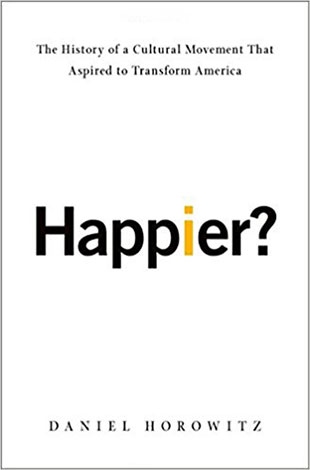"Seligman's distinctive contributions came in his emphasis on character strengths and offering of formulations of what it meant to be happy in ways that went against the grain of books by popularizers who, he felt, often put forward a simplified and incautiously optimistic sense of what readers could achieve. Seligman made his case for a complex understanding of subjective well-being in two books that combined the popular and professional: Authentic Happiness: Using the New Positive Psychology to Realize Your Potential for Lasting Fulfillment (2002) and Flourish: A Visionary New Understanding of Happiness and Well-Being (2011).
"In Authentic Happiness, as others would do, Seligman not only criticized unscientific hucksters and Pollyannas but also stepped over the boundaries that once separated them from rigorously scientific academics. 'Why,' he remarked at the outset, 'is a book about Positive Psychology about anything more than "happiology" or hedonics – the science of how we feel from moment to moment?' So he focused on differentiating what he did from what Norman Vincent Peale had offered earlier. 'Is Positive Psychology just positive thinking warmed over?' he asked. His answer was that Peale and positive psychology were connected philosophically but not methodologically. They both relied on the 'Arminian heresy' that led to one's election to grace and a belief in 'the individual freely choosing.' Yet they differed in several important respects. If positive thinking was for amateurs, then positive psychology relied on systematic, empirically based, and replicable science, he noted in ways that reflected the higher prestige often accorded to fields that could claim the mantle of science. Moreover, unlike what Peale and his ilk advocated, Seligman and his compatriots, rather than holding 'a brief for positivity,' carefully balanced it with and addressed negativity. Yet as with other popular books Seligman's promised readers, as the book's subtitle indicated, 'your potential for lasting fulfillment.' Similarly, he offered questionnaires for readers to fill out, specific exercises they might do, and a catchy set of formulas.
"Central to Authentic Happiness was a distinction between hedonic, short-term pleasures and eudaimonic, long-term gratifications, that in turn rested on the differentiation between superficial personality characteristics and enduring character ones. 'I am a dyed-in-the-wool pessimist,' Seligman remarked. 'I believe that only pessimists can write sober and sensible books on optimism.' Yet he insisted at the outset that his 'book takes you through the countryside of pleasure and gratification, up into the high country of strength and virtue, and finally to the peaks of lasting fulfillment: meaning and purpose.' On the one hand were inauthentic, fleeting but intensely felt pleasures that came from eating chocolate or getting a back rub. On the other were deeper, stabler, and more authentic gratifications that led not to the pleasant life but to the good one. Authentic gratifications, he insisted, drawing on the concept of flow, 'engage us fully, we become immersed and absorbed in them, and we lose self-consciousness.'" Attempting to provide an alternative to the American Psychiatric Association's pathology-focused Diagnostic and Statistical Manual of Mental Disorders with a well-being approach, he insisted on 'focusing on what is right about people and specifically about the strengths of character that make the good life possible.' He and his colleagues offered a catalogue of healthy virtues. Six in number, they were wisdom and knowledge, courage, love, justice, temperance, and spirituality and transcendence. If the pleasures were 'about the senses and the emotions,' then the gratifications were 'about enacting personal strengths and virtues.' In turn he broke these six virtues into twenty-four character strengths such as curiosity, judgment, valor, integrity, humility, playfulness, and passion. To achieve 'the good life,' Seligman insisted, use 'your signature strengths every day in the main realms of your life to bring abundant gratification and authentic happiness.'
"Seligman cast his advocacy of character strengths and virtues in a specific framework. Social science, he asserted, had long ago turned its back on 'Victorian moralizing' and replaced it with an emphasis on 'egalitarianism' by emphasizing environmental causation rather than character. In doing so, social science allows us to 'escape from the value-laden, blame-accusing religiously inspired, class oppressing notion of character, and get on with the monumental task of building a healthier 'nurturing environment.' Consequently, 'in this age of postmodernism and ethical relativism, it has become commonplace to assume that virtues were 'merely a matter of social convention, peculiar to the time and place of the beholder.' Now, he insisted as he reflected his admiration for Puritan theology, 'the time has come to resurrect character as a central concept to the scientific study of behavior.' "
